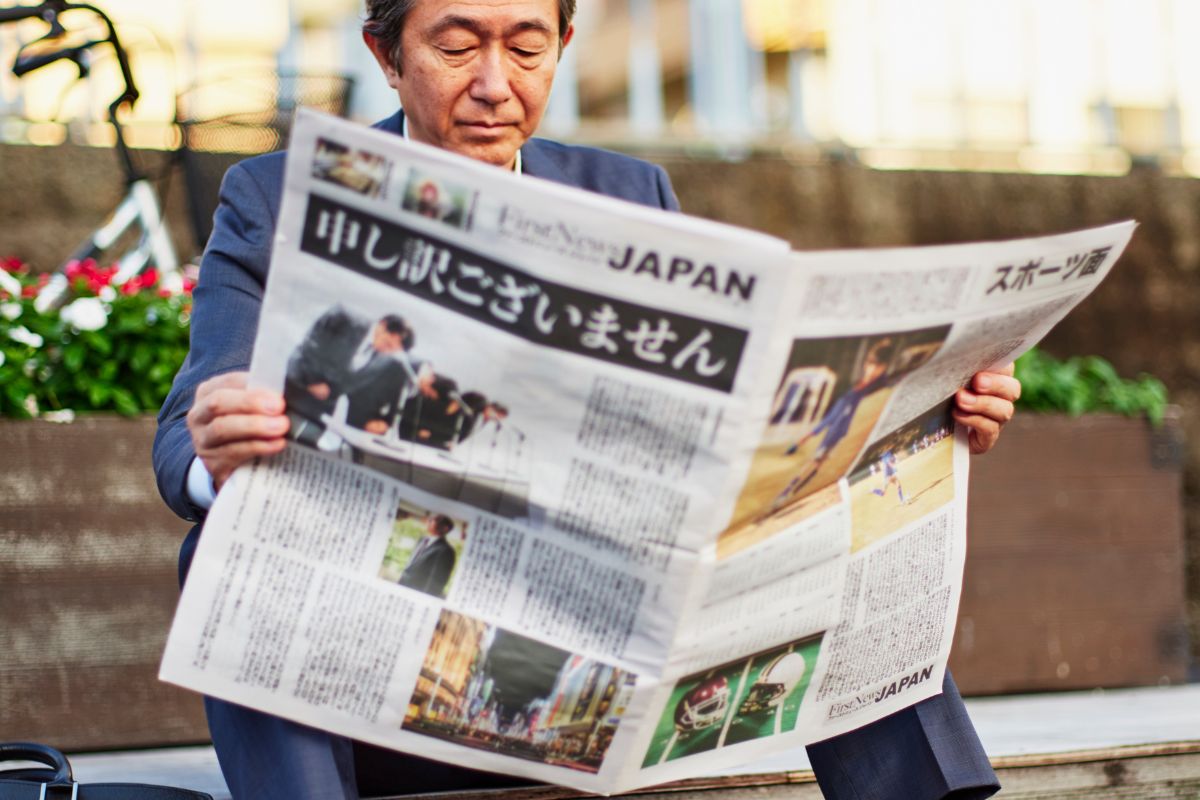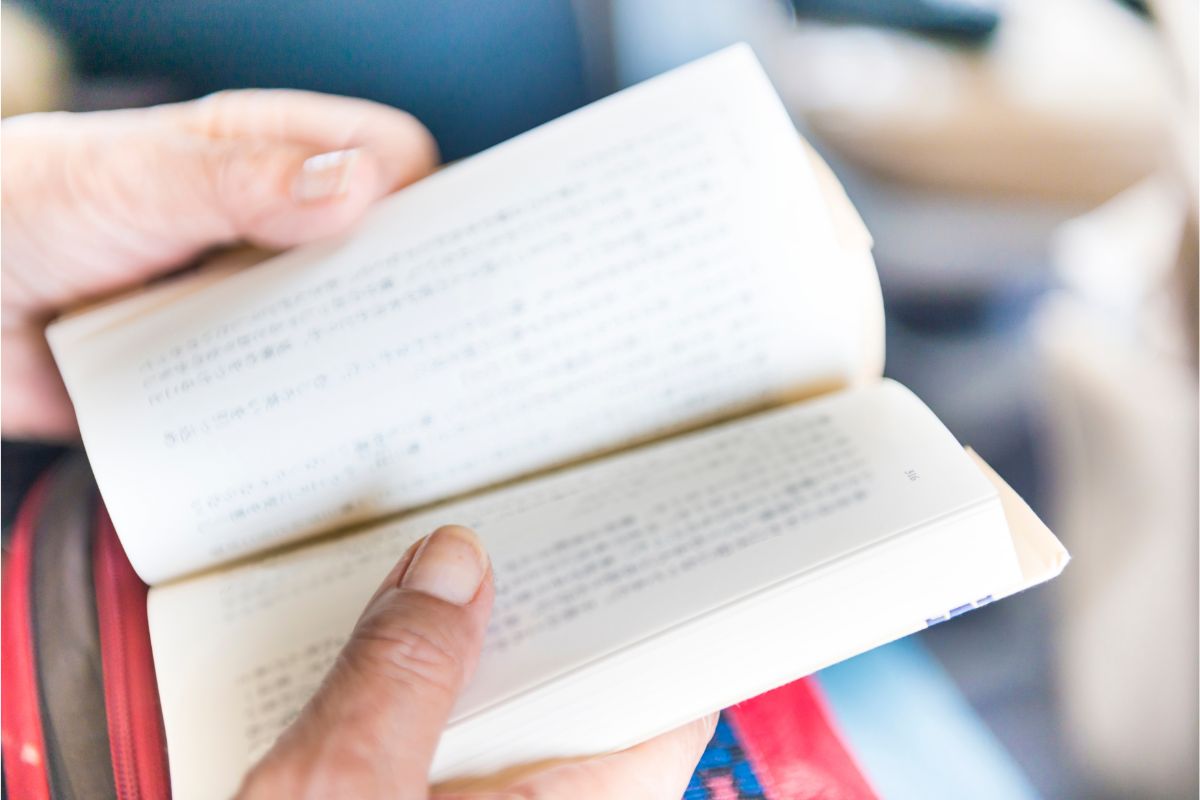Learning Japanese isn’t easy. There are some aspects that confuse many of us – like the three alphabets they use! But, these are more like three different writing systems rather than complete alphabets.

What this means is, for someone just starting to learn Japanese, it can be overwhelming. However, the most confusing thing might be how they read.
Chances are, you’ve heard that the Japanese read right to left – that’s the opposite of what most of us are used to doing!
Training your brain to read this way can be challenging, since it won’t come naturally to many of us. That in itself can be difficult and take some time to get used to.
However, it begs the question – does Japanese text always have to be read from right to left?
No doubt, if you’ve recently picked up a Japanese textbook, you might have noticed that things were a little different to what you expected.
It probably didn’t make sense if you tried to read it right to left, and there’s a reason for this!
If you’re interested in finding out about Japanese reading and what the deal is, just keep reading – you’ll find out everything you need to know.
Do Japanese Read Right To Left
The idea of reading anything from right to left might feel bizarre, but this is actually what’s done in Japan! However, nothing is ever that simple, so there’s more to unpack.
Reading from right to left, as well as writing right to left, is done using vertical columns instead of horizontal lines. The name given to this way of writing is tategaki – 縦書き. This literally translates to “vertical writing”.
When you’re reading tategaki, you always start at the top right-hand column, and read downwards. Once you reach the end of the first column, you move over onto the next column to the left and start at the top again.
This also means that you will be turning pages in the “opposite” direction, too!
This way of writing is commonly used in more formal settings, such as literature or letters. But if that’s the case, that means that there is another way of writing, right?
Left To Right Is Also Sometimes Used!
Yep! The Japanese also use the way of writing and reading that we’re more familiar with – left to right! The name given to this way of writing is yokogaki – 横書. This word translates to “horizontal writing” – fitting, huh?
In this form of writing, words are written out and read horizontally on a page, and from left to right, just like we do in the West and most other places.
This form of writing has been around for a while, but has gradually become more popular. It’s often used in casual settings and teaching
If you’re learning Japanese and opened a Japanese textbook expecting to see tategaki, you were probably faced with yokogaki on the pages!
This method is probably going to be the type of writing you see when you open most kinds of Japanese textbooks.
When Did Horizontal Writing Start To Be Used?
Yokogaki only started to become more popular after the Second World War. It did exist before then, but just wasn’t as popular.
There are records of this writing being used early on, but it wasn’t as widespread as tategaki.
Why? After the Second World War, education started to become more standardized, and yokogaki became more popular. This is probably because of the influences of foreign languages and ways of doing things.
Nowadays, you are far more likely to see yokogaki written out if you go to Japan. However, both forms of writing are still widely used!
So, Which Form Of Writing Is Correct?

Truth is – both forms of writing are correct! There are no real rules to tell you which type of writing should be used when – it’s all down to the writer.
However, you are far more likely to see, and therefore use, yokogaki in casual scenarios and modern forms of communication. Texting is done using yokogaki, as are internet searches and the majority of academic books.
When you find yourself in more formal situations, there’s a good chance that tategaki will be used. This is still seen to be the more traditional way of writing.
Still, both forms of writing and reading are correct. This can be extremely confusing if you’re just starting to learn Japanese.
However, you shouldn’t be too concerned about this – using yokogaki is likely to come more naturally to you, especially if you are already used to writing and reading from the left to right.
Later on, when you feel more comfortable with the Japanese language, you can always try becoming more acquainted with tategaki.
It might pose an extra challenge for you and your skills, but it would be a fun adventure to assess your skills!
The Third Option
As we said – nothing is ever that simple, is it? There is also a third option that has historically been used, too! Before World War Two, Japanese was occasionally read horizontally… from right to left.
This method of writing was primarily used for design or space-saving reasons. An example of this would have been for product labels or shop signs. In these scenarios, space has to be maximized.
Using vertical writing would take up too much space, so it was switched up.
This horizontal writing was technically just a single row of columns with one character, but they have the same effect as the horizontal line method.
This option is still sometimes used today, but not often. It has a very old-fashioned feel to it, and is outdated. As such, it is used purposefully, when designers want their signs to have a retro feel to them.
What About A Combination?
There might also be instances where vertical and horizontal writing is combined in a piece. This is used for things like magazine covers by graphic designers, since it looks interesting and makes the most of the space.
However, this is not generally used for things outside editorial pieces such as posters, newspapers, and magazines.
Final Thoughts
Japanese is a wonderful language, but it can be confusing, too! Japanese can be read from right to left – up to down, but also left to right – or side to side.
There is no one right way of doing things, but the vertical and right to left writing is typically used in most formal settings.
When the mood is casual, however, the more modern version of left to right, horizontal writing is more commonly used.
- 16 Best Websites To Watch Japanese Movies With English Subtitles - May 11, 2023
- Is ZIPAIR The Best Airline For Traveling To Japan? - May 11, 2023
- Ryu Murakami Vs Haruki Murakami – Which One Should You Read? - May 11, 2023








